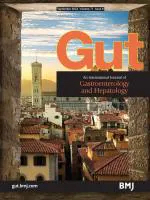Gut 2022 September 1; Online First. doi: 10.1136/gutjnl-2021-326610
SK2 channels set a signalling hub bolstering CAF-triggered tumourigenic processes in pancreatic cancer
Raphael Rapetti-Mauss1, Jérémy Nigri2, Camille Berenguier1, Pascal Finetti2, Sarah Simha Tubiana2, Bonnie Labrum1, Benoit Allegrini1, Bernard Pellissier1, Georgios Efthymiou2, Zainab Hussain2, Corinne Bousquet3, Nelson Dusetti2, François Bertucci2, Hélène Guizouarn1, Patricia Melnyk4, Franck Borgese1, Richard Tomasini2, Olivier Soriani1
Affiliations
1Université Côte d’azur, CNRS, Inserm, iBV, Nice, France
2INSERM, U1068, Cancer Research Center of Marseille, Institut Paoli-Calmettes, CNRS UMR7258, Université Aix-Marseille, Marseille, France
3Centre de Recherche en Cancérologie de Toulouse (CRCT), INSERM Unité Mixte de Recherche UMR-1037, CNRS Equipe de Recherche Labellisée ERL5294, Equipe de Recherche Labellisée “Ligue Contre le Cancer” & “LabEx Toucan”, Université de Toulouse, Toulouse, France
4Lille Neuroscience and Cognition Research Center UMR-S 1172, University of Lille, INSERM, CHU Lille, Lille, France
Abstract
Objective. Intercellular communication within pancreatic ductal adenocarcinoma (PDAC) dramatically contributes to metastatic processes. The underlying mechanisms are poorly understood, resulting in a lack of targeted therapy to counteract stromal-induced cancer cell aggressiveness. Here, we investigated whether ion channels, which remain understudied in cancer biology, contribute to intercellular communication in PDAC.
Design. We evaluated the effects of conditioned media from patient-derived cancer-associated fibroblasts (CAFs) on electrical features of pancreatic cancer cells (PCC). The molecular mechanisms were deciphered using a combination of electrophysiology, bioinformatics, molecular and biochemistry techniques in cell lines and human samples. An orthotropic mouse model where CAF and PCC were co-injected was used to evaluate tumour growth and metastasis dissemination. Pharmacological studies were carried out in the Pdx1-Cre, Ink4afl/fl LSL-KrasG12D (KICpdx1) mouse model.
Results. We report that the K+ channel SK2 expressed in PCC is stimulated by CAF-secreted cues (8.84 vs 2.49 pA/pF) promoting the phosphorylation of the channel through an integrin–epidermal growth factor receptor (EGFR)–AKT (Protein kinase B) axis. SK2 stimulation sets a positive feedback on the signalling pathway, increasing invasiveness in vitro (threefold) and metastasis formation in vivo. The CAF-dependent formation of the signalling hub associating SK2 and AKT requires the sigma-1 receptor chaperone. The pharmacological targeting of Sig-1R abolished CAF-induced activation of SK2, reduced tumour progression and extended the overall survival in mice (11.7 weeks vs 9.5 weeks).
Conclusion. We establish a new paradigm in which an ion channel shifts the activation level of a signalling pathway in response to stromal cues, opening a new therapeutic window targeting the formation of ion channel-dependent signalling hubs.
DOI: 10.1136/gutjnl-2021-326610

